Moving to Tasmania - What to Know Before You Relocate
Thinking of moving to Tass? With its breathtaking landscapes and unique island lifestyle, it's no wonder many are captivated. Dive into our guide and uncover everything you need to know about Apple Isle before booking Tasmania removalists and making the leap to this serene haven.
24 min read

Key takeaways
- Tasmania, known as the 'Apple Isle', offers a unique blend of pristine wilderness, rich history, and a burgeoning food and wine scene.
- Despite being more affordable than mainland Australia, Tasmania's housing market is heating up, driven in part by its growing appeal.
- The Tasmanian economy is diversified, with many employment opportunities in strong sectors like tourism, agriculture, and education.
- With a mix of city amenities in places like Hobart and Launceston, as well as untouched natural landscapes, Tasmania promises a relaxed and high-quality lifestyle.
- Tasmania's public schools operate on a school zoning system based on geographic boundaries, ensuring priority enrollment for local residents.
- Multiple airline carriers fly directly to Hobart International Airport and Launceston Airport. For interstate transitions, there's the Spirit of Tasmania ferry.
- Renowned for its unparalleled natural beauty, Tasmania boasts over 40% of its land as national parks and heritage sites. Tasmanian's love their tight-knit communities and small town feel with a look-out for each other vibe making it an appealing destination for relocation.
"So I hear that you are thinking of moving to Tasmania? Congratulations and a great choice! Did you know that Tasmania is affectionately dubbed the 'Apple Isle?" It's like that quiet kid in class who turns out to be that quiet achiever and scores top marks in everything, can whip up a gourmet meal, and, oh, has a backyard filled with some of the world’s most stunning wilderness. Seriously, it's an under-the-radar wonderland. So, if you've ever thought, 'Hmm, what's it like to actually live there?' or you're just tired of your current view and want something more...apple-y, you're in the right place. With clean air, a temperate climate, and an enviable work-life balance, Tasmania is a place where you can enjoy a relaxed, high-quality lifestyle. So strap in, and let's unpack the world of Tasmania and what you need to know.
A snapshot of Tasmania
| Number of people living in Tasmania | 557,571 |
| Number of families | 150,573 |
| Median Age | 42 |
| Number of private dwellings | 258,611 |
| Average number of people per household | 2.4 |
| Median weekly household income | $1,358 |
| Number of people attending an education institution | 154,201 |
| People who travel to work by car | 70.5% |
| People who travel to work by public transport | 3.2% |
| Unemployed rate | 5.9% |
Source: Australian Bureau of Statistics Census 2021
Why move to Tasmania?
Tasmania is like a hidden gem, with its stunning natural beauty, fascinating history, and vibrant culture. It's a paradise for outdoor enthusiasts, offering endless opportunities for hiking, biking, boating, and fishing. And let's not forget about the incredible arts scene, amazing local produce serving up world-class food and wine, and the laid-back lifestyle that's just unbeatable.
The housing is affordable in Tasmania compared to mainland Australia, you'll get so much more bang for your buck when you buy property here. And guess what? The traffic is practically non-existent, the air is super clean (some of the cleanest in the world, actually), and the locals? Oh boy, they are the friendliest and most welcoming people you'll ever meet.
And let me tell you, Tasmania is not just about the landscapes and culture. It's a place that offers something for everyone. Whether you're looking for peace and quiet or an active outdoor lifestyle, living in Tasmania means enjoying a strong sense of community and a more relaxed pace of life. It's a tranquil escape from the hustle and bustle of big cities. Come and experience the charm of Tasmania for yourself!
Overview of Tasmania
Tasmania, or "Tassie" as it's affectionately called, is a charming island state of Australia. It may not be the largest place, spanning about 68,000 square kilometres, but that's actually a plus - you can drive across it without feeling like you've aged a century! Picture it: located approximately 240 km south of the Australian mainland, separated by the Bass Strait. This heart-shaped island is about the same size as Ireland or the U.S. state of West Virginia. Surrounded by the Indian and Pacific Oceans, with the Tasman Sea to the east.
Hobart is your capital city and nestled between a mountain and a harbour, it's got a vibe that’s a mix of seaside charm and artsy cool. Tasmania's cities Launceston, Burnie, and Devonport are your other main contenders for urban-ish living. Plus, the beaches – oh boy, the beautiful beaches. Tasmania isn't just about quiet streets and tranquil forests; it boasts shores with sands so squeaky you'd think they’re trying to chat with you.
Get to know Tasmania's regions, cities, and towns
Tasmania is divided into different regions, each with its own unique charm and character. Let's explore them, shall we?
The North West region is known for its fertile soils and stunning coastline. You'll find cities like Burnie and Devonport here, offering a delightful mix of nature and urban Tasmanian life.
Moving on to the North East region, we have Launceston, the second largest city after the capital Hobart. This place is famous for its beautiful vineyards, so wine lovers, take note!
Now, let's head to the East Coast region, famous for its breathtaking beaches and national parks. Trust me, you don't want to miss Freycinet National Park. It's home to the world-renowned Wineglass Bay - a sight to behold!
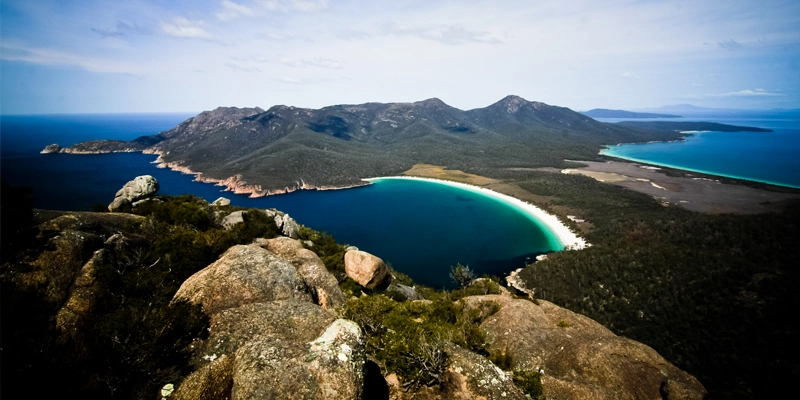
Down south, where Hobart is located, you'll find the Southern region. It's a perfect blend of wilderness and culture. From the historic sites of Port Arthur to the trendy Salamanca Market in Hobart, there's something for everyone here.
For all the true wilderness enthusiasts out there, the West Coast and Central Highlands are calling your name. With towns like Strahan and Queenstown, this region offers a rugged landscape with mountains, rivers, and rainforests to explore.
Tasmania's beautiful landscape
Tasmania's topography is varied and dramatic. The state is known for its rugged wilderness areas and is home to some of the world's tallest hardwood trees. The western part of the state is dominated by the Tasmanian Wilderness World Heritage Area, a vast expanse of pristine forest, spectacular gorges, and alpine heathland.
In contrast, the eastern part of the state is made up of rolling farmlands, wine regions, and beautiful beaches. The central region is mountainous and includes the highest point in Tasmania, Mount Ossa, which stands at 1,617 metres.
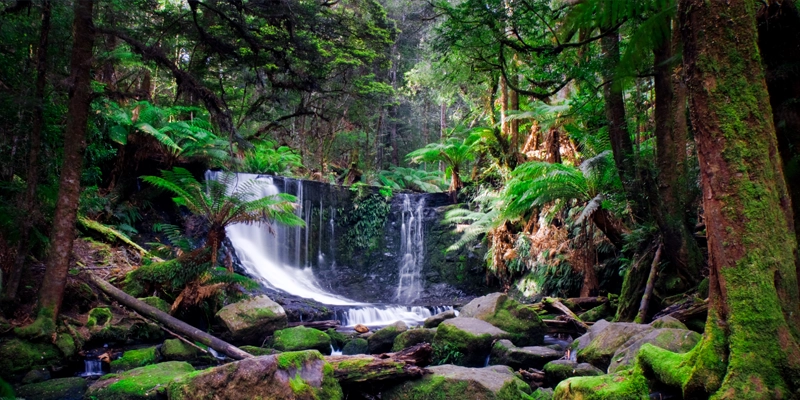
What's the weather like in Tasmania?
Tasmania, though it may be small, has a climate that changes quite a bit across its different regions and sometimes four distinct seasons in one day. The coastal areas have a nice temperate climate, while the highlands give you that alpine vibe. Here's a breakdown of what you can expect throughout the year:
Spring (September - November)
Spring in Tasmania is a beautiful time with blossoming gardens and warmer weather. Average temperatures range from 8°C to 17°C. Rainfall is moderate, so it's a good idea to pack a light rain jacket. This is a great time to visit the Royal Tasmanian Botanical Gardens in Hobart or the Tulip Festival in Wynyard. It is also the best time to move, where there are a tonne of outdoor activities for everyone including kids and pets that help you venture out and explore the Apple Isle as your new home.
Summer (December - February)
Summer is warm but not excessively hot, with temperatures ranging from 12°C to 21°C. It's the perfect time for beach visits and water activities. Popular spots include Wineglass Bay and Bay of Fires. Don't forget your sunscreen, hat, and swimsuit!
Autumn (March - May)
Autumn is known for its stunning fall foliage, especially in areas like the Tamar Valley. Temperatures range from 9°C to 17°C. It's a great time for hiking and exploring national parks, so pack comfortable walking shoes and a warm jacket for cooler evenings.
Winter (June - August)
Winter is cool with temperatures between 2°C and 12°C. Snowfall is common in the highlands, making it a great time for snow sports at places like Ben Lomond National Park. Pack warm clothing including a winter coat, gloves, and a beanie.
Packing tips
Tasmanian weather can be changeable, so layers are key. A waterproof jacket is essential year-round, as is a good pair of walking shoes if you plan on exploring Tasmania's stunning natural landscapes. In summer, bring lightweight clothing but still pack a sweater for cooler evenings. In winter, warm clothing is a must.
Best places to escape weather extremes
To escape the heat, head to Mount Wellington in Hobart. The altitude keeps it cool even in summer. In winter, if you're not a fan of the cold, stick to the coastal areas which are milder compared to the highlands.

Housing affordability in Tasmania
Tasmania has always been a more affordable option compared to big cities like Sydney or Melbourne. But guess what? It's starting to get noticed! Over the past few years, property values in Tasmania, especially in hotspots like Hobart, have been on the rise. And you know what's driving this growth? Tasmania's irresistible lifestyle, booming tourism, and the ripple effect from mainland Australia's property markets.
So before you make the move here you'll want to know what the housing affordability and cost of living in Tasmania are like right? So let's dive right in:
What's the median house price in Tasmania?
The median house price of Tasmania stands at $647,000 in 2023.
- Hobart and surrounds median: Hobart median house price at $817,500.
- Launceston and the North East median: Launceston median house price at $695,000.
- North West Tasmania median: Devonport median house price at $430,000.
Hobart and surrounds
Hobart is the heart of Tasmania, the allure of city vibes with mountainous backdrops. Premium locations of Sandy Bay flash median price tags of $1,300,000, and Tranmere isn’t far behind at $1,185,000.
Other locations like Bellerive, Lenah Valley, and Kingston range between $700,000 and $1,000,000. While if you are looking for a deal, New Norfolk has a house median of $472,500.
Launceston and the North East
Launceston and the North East is the perfect blend of urban hustle, coastal charm, and a dash of the countryside. Suburbs of Binalong Bay and Derby are lounging at the top, both with a cool median of $900,000.
More affordable locations are Riverside, Trevallyn, and Newstead and you can expect to be paying between $570,000 to $720,000. But if you want to buy something to get into the property market, Scottsdale is your go-to spot with a median of $378,000.
North West Tasmania
North West Tasmania is about the coastlines, rolling farmlands, and the kind of small-town feels where everyone knows your name (or will soon). Sisters Beach is the belle of the ball at $900,000. Imagine those sunset views! While you can live at Turners Beach, Stanley, and Penguin (yes, there’s a place called Penguin, and it’s as cool as it sounds) hover between $520,000 and $730,000.
Then there is the feeling of the mining-town nostalgia, Zeehan’s got houses at a steal for $190,000. Queenstown's not far off at $226,000. A great spot to break into the market.
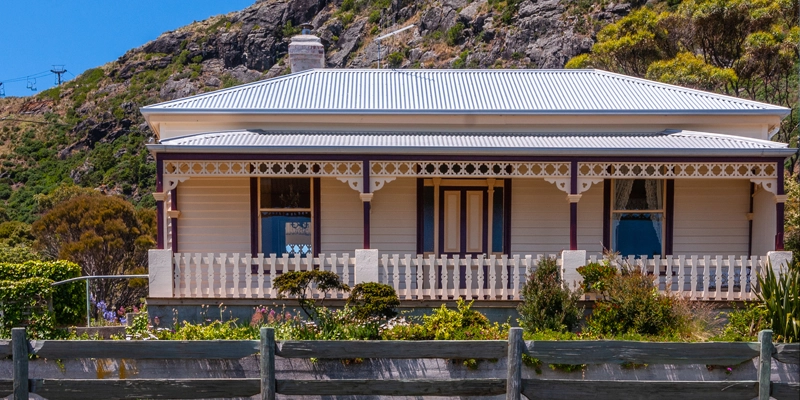
What's the median rental price in Tasmania?
The median weekly rent in Tasmania is quite appealing compared to other parts of Australia. As of 2023, tenants can expect to pay:
- Statewide median: The overall median rental price across Tasmania stands at $450 per week.
- Hobart and surrounds median: In Hobart, the median rent is slightly higher, at approximately $575 per week to rent a house and $520 per week for a unit.
- Launceston and the North East median: In Launceston and the surrounding northeastern region, renters can expect to pay a median price of around $460 per week for a house and $430 per week for a unit.
- North West Tasmania median: On the western coast, the median hovers around $430 per week. for a house.
Remember that these are median values, so actual rental prices can vary depending on the specific location, property type, and amenities.
Should you buy or rent in Tasmania?
Whether to buy or rent in Tasmania largely depends on your personal circumstances, financial situation, and long-term plans. However, with Tasmania's growing appeal, both options present unique opportunities and advantages for individuals and families who wish to relocate to Tasmania. It's important to do thorough research, consult with local real estate agents, and maybe even test the waters by renting before making a purchase decision.
- Buying means you'll own the property. You'll pay a mortgage, deal with property taxes, and be responsible for all maintenance. But, with time, you can build equity, benefit from potential capital appreciation, and have the freedom to customise your home as you see fit.
- Renting, on the other hand, means you'll pay a landlord to live in a property. You won't deal with property taxes, and usually, large repairs aren't your responsibility. However, you won't build equity, and there's less stability long term.
Which areas are high in demand in Tasmania?
New Norfolk, Moonah, and Glenorchy offer more reasonable median house prices compared to other suburbs. Whereas Sandy Bay, Tranmere, and North Hobart are pricier but hold strong demand and are often highly sought after and might offer better capital appreciation in the long run.
Which areas offer affordable rents in Tasmania?
Regions like Queenstown and Zeehan, where buying prices are low, typically also offer more affordable rents. It might be worth renting here and investing your money elsewhere. Central areas like Hobart Launceston might have high purchasing costs, but renting allows you to enjoy city amenities without the long-term financial commitment.
Tasmania's cost of living
The increasing popularity of Tasmania, particularly among interstate migrants and tourists, has put upward pressure on certain living costs, especially housing. While certain costs may still be lower in Tasmania, wages also tend to be lower than in major mainland cities and this can offset the benefits of the lower cost of living for some people.
It's essential to remember that cost of living can be subjective and depends largely on individual or family preferences, habits, and lifestyle choices. With that in mind, let's take a snapshot of what the common essentials cost in Tasmania to give you an idea of the cost of everyday essentials:
Groceries/Food
| Everyday Item | Price (AUD) |
| Milk (1 litre) | $2.05 |
| Bread (1 loaf) | $3.45 |
| Rice (1kg) | $1.80 |
| Chicken breast (1kg) | $9.95 |
| Eggs (a dozen) | $5.40 |
| Apples (1kg) | $4.42 |
| Tomatoes (1kg) | $5.40 |
| Coffee (standard cappuccino in a cafe) | $4.30 |
Utilities
| Electricity | Fees/Tariffs (AUD) |
| Daily supply charge | 89 cents per day |
| General usage charge | 24.50 cents per kilowatt-hour (kwh) |
| Average cost 2-3 people | $230 per month |
| Gas | |
| Fixed daily charge | 61 cents per day |
| Usage charge | 4.606 cents per megajoule(MJ) |
| Water | |
| Fixed water charges | From 380.25 annually |
| Fixed sewerage charges | From 729.71 annually |
| Variable water charges | $1.1774 per kilolitre |
| NBN Internet | |
| 25 Mbps or more, unlimited data | From $59.90 per month |
| 50 Mbps or more, unlimited data | From $69.90 per month |
| 100 Mbps or more, unlimited data | From $89.90 per month |
* Note: Not every household is connected to Gas as the Tasmanian gas pipelines are relatively new and it can be quite costly to install gas.
Transportation
| Transportation Expense | Price (AUD) |
| Unleaded petrol (1 Litre) | $1.93 |
| Diesel petrol (1 Litre) | $2.21 |
| Transport fare(public transport - adult) | $3.50 |
| Greencard loaded fare(20% discounted) | $2.80 |
| Taxi (standard tariff for 1km) | $3.00 |
Hidden and not-so-hidden costs
Remember, Tasmania is an island, which sometimes means island prices. Some items can be pricier due to transport costs. Also, if you're big on international brands or exotic foods, be prepared to pay a little extra.
The bright side?
But hey, there’s good news! Tasmania offers some lifestyle perks that can save you money in the long run. Think of local markets with fresh produce, fewer toll roads, and often shorter commutes. Plus, the sheer natural beauty? That's priceless.
Finding work in Tasmania
Tasmania, it's not just about the breathtaking landscapes and apple orchards. There's a whole lot more happening when it comes to job opportunities! As Australia's island state, it offers a unique mix of industries and growth areas. Let's take a closer look at what's going on in the employment scene in Tasmania, shall we?
Tourism & Hospitality
With its stunning landscapes, historic sites, and boutique experiences, tourism is a major player in Tasmania. Tasmania's taste festival (Tasmania's Taste of Summer) is held in Hobart's waterfront, this is the largest food and wine festival in Australia. It celebrates the island's gourmet food and beverages, with a particular focus on local produce and wines.
Then there's also the internationally recognised tarmac-based rally car racing event Targa Tasmania which covers over 2,000 kilometres of the state's challenging and picturesque roads. This translates to more job opportunities in areas like travel planning, hotel and restaurant management, tour guiding, and other related services, so if you operate in this field, you'll feel at home.
Agriculture & Horticulture
Famously dubbed the 'Apple Isle,' Tasmania has a robust agricultural sector. Think dairy farming, fruit cultivation, viticulture, and organic farming. So, if you've got a green thumb or an interest in agribusiness, this could be your arena.
Aquaculture
Tasmania is a significant producer of high-quality seafood, especially salmon. The aquaculture sector offers roles ranging from marine biology to logistics and sales. It is the very reason why Tasmanian Salmon is world-renowned and also why Tassie is recognised as a quality source of fresh salmon and seafood.
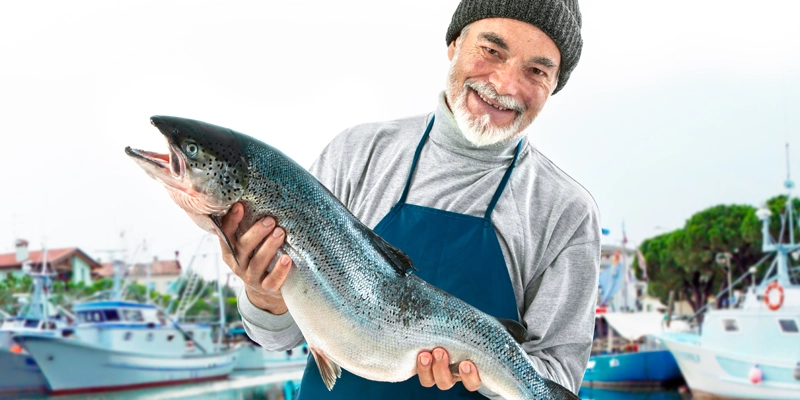
Healthcare
If you work in healthcare, as with many places globally, healthcare remains an essential service. With a mix of urban centres and remote areas, there's a consistent demand for healthcare professionals, including doctors, nurses, and allied health practitioners.
Education
Whether it's primary, secondary, or tertiary institutions, educators are always in demand. The University of Tasmania, for instance, is a major employer and often has openings for academic and administrative roles.
Trades & Construction
With ongoing developments and infrastructural projects, tradespeople – be it electricians, carpenters, or plumbers there are substantial opportunities in Tassie right across this sector.
Public service & Administration
Government roles, whether state or local, offer a wide range of employment opportunities, from environmental planning to community development.
Arts & Culture
For the creatively inclined, Tasmania's burgeoning arts scene and art galleries, fueled by events like the MONA FOMA festival and institutions like the Museum of Old and New Art (MONA), offers roles in curation, event management, and more.
Retail & Sales
From boutique stores in Hobart to local markets in smaller towns, the retail sector is alive and kicking, providing opportunities for sales, management, and customer service roles.
Job seeking tips:
- Networking: Join local groups or associations related to your profession. Networking can often open doors to jobs that aren't advertised.
- Local job portals: Websites like Jobs Tasmania often list local opportunities tailored to the region.
- Research: Before moving, research industries that are booming in the area. This can help you align your skills or even acquire new ones.
- Stay open: While you might have a specific role in mind, stay open to related opportunities. Diverse experiences can lead to unexpected career paths.
What is the lifestyle and culture of Tasmania?
It's really important to understand that Tasmania's culture is deeply rooted in its Indigenous history and penal colony heritage. It's also home to the Palawa people and it's really respectful to recognise their ongoing connection to the land and waters. While Tasmania's local customs share many Australian customs, the island has this more relaxed and slower pace, especially in its smaller communities. There's this strong 'support local' sentiment throughout Tasmania, you know, given its relatively small economy and the abundance of local artisans, farmers, and businesses. So, choosing and supporting local products, foods, and services is what the locals truly appreciate about this island state.
Must see key events, festivals and places
Tasmania has some awesome events and festivals throughout the year! In June, there's Dark Mofo, a unique arts and music festival that'll blow your mind. And don't miss TastroFest, our very own astronomy festival. If you're into more traditional fun, you gotta check out the Royal Hobart Show, or as we locals call it, 'The Show'. It's a fantastic celebration of our agricultural wonders.
If you love the outdoor vibe then, outdoor life in Tasmania is unparalleled. From the pristine beaches to the lush rainforests, there's always something for you to explore. The Freycinet National Park, with its iconic Wineglass Bay, is a must-visit. And if you're into hiking, the Overland Track will take you through the heart of Tasmania's wilderness.
The food and wine scene is equally as impressive. Tassie is kind of famous for it. Being surrounded by the South Pacific Ocean to the east and the Southern Ocean to the south and west, seafood is fresh and the local produce is often described as some of the freshest, purest, and most flavourful in the world.
The very reason for Tasmania's Taste of Summer(previously known as Taste of Tasmania) hosted in January every year, is a culinary extravaganza showcasing the best of the Apple Isle's local produce. You'll get to sample everything from Tassie's world-famous cheeses to the freshest seafood and locally grown fruits and vegetables.
Tasmania is also a known major producer of world-class cool-climate wines, and the vineyards are a sight to behold. And sparking wine lovers, make sure to check out the Effervescence Tasmania at Clover Hill Vineyard, an immersive experience that showcases not only the sparkling wines but also pairs them with gourmet food, educational masterclasses, and the picturesque setting of the vineyards and the state. One experience that you cannot afford to miss.
Education and Healthcare
Navigating a new place can be both thrilling and daunting. But when it comes to essential aspects like education and healthcare, you want nothing but clarity. So let's unravel the intricacies of Tasmania's education and healthcare systems to ensure you're well-informed before making the move with your family.
School life in Tasmania
Many public schools in Tasmania operate under a school zoning system. This means that each public school has a designated local intake area, often based on suburbs or specific geographic boundaries. If you live within a school's intake area, your kids get priority for enrolment there. So, if your kids are still making their way through their school years, and you have a specific school you would like them to attend, remember to consider the catchment area when you are looking for a place to buy or rent.
However, it's worth noting:
- Out-of-zone enrolments: While students within a school's zone are given priority, it's possible for students living outside the zone to apply for enrolment at the school. Acceptance for out-of-zone students depends on factors like available spaces and specific school policies.
- Special programs and schools: Some schools or specific programs within schools may have different enrolment criteria, not strictly based on zoning. For example, schools with specialised programs, such as performing arts or sports academies, might accept students based on auditions or trials.
Early years: Tasmania offers a comprehensive early education system, with numerous preschools and kindergartens catering to kids as young as 3.
Primary and Secondary: Compulsory schooling starts from Prep to Year 12. There are a variety of government-run, independent schools, and religious schools to choose from.
Specialised institutions
TasTAFE: It's the state's leading vocational education and training provider, offering a wide range of courses.
University of Tasmania (UTAS): The premier higher education institution in the state, UTAS offers a broad spectrum of undergraduate, postgraduate, and research programs and accepts many international students.
Extracurricular activities
Tasmania, with its rich natural environment, provides numerous opportunities for outdoor sports, and outdoor activities and plenty of opportunities for outdoor education, including camping, hiking, and marine exploration.
Healthcare in Tasmania
Public Healthcare
Hospitals: The Royal Hobart Hospital and Launceston General Hospital are the major tertiary hospitals, equipped to handle a wide range of medical needs.
Medicare: Australia's public health system, Medicare, covers many healthcare costs, ensuring services are affordable and accessible.
Private Healthcare
There are several private hospitals and clinics across Tasmania, offering a range of specialised services. Opting for private health insurance can offset many of these costs.
General Practitioners (GPs)
Essential for primary care, GPs are widespread across the state. It's advisable to register with a local GP once you settle after the move.
Dental care
While basic dental services for kids under Medicare are often free, adults might want to consider private health insurance to cover dental work as costs can add up without it.
Telehealth services
Especially relevant for those in remote areas of Tasmania, telehealth services ensure that medical advice is just a call or click away.
How to get around
There are many options to make your way around once you are in Tassie. You can drive, catch a coach service outside urban areas, use public transport and even walk and cycle.
Driving around
If you possess a valid driving license from another Australian state or even a New Zealand license, you are permitted to drive in Tasmania for up to 6 months. However, it is essential to carry your physical license with you while operating a vehicle. If you are moving to Tasmania indefinitely and will be driving longer than 6 months it's recommended to convert your license over to a Tasmanian license. You can do this from Service Tasmania.
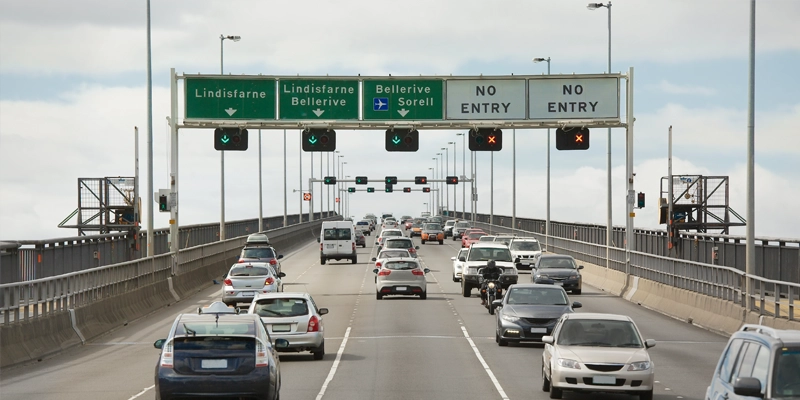
Know the roads and major highways:
- Bass Highway (A2): Connecting Hobart and Launceston via the north coast, it's one of the primary routes for vehicular traffic. It also extends to Burnie and Wynyard.
- Midland Highway (A1): Connecting Hobart and Launceston through the heart of Tasmania, this is another major road link, especially for those avoiding the coastal route.
- Tasman Highway (A3): Commencing in Hobart, it runs to the east coast and then to Launceston, catering to those travelling to/from the eastern regions.
- Arthur Highway (A9): Essential for those heading to the famous Port Arthur, it starts at Sorell and leads right to the historic site.
Buses and public transport
If you're thinking of using the Tasmanian public transport system often, make sure you sign up for a Greencard/Transportme card. It'll deduct your fare as you tap on and off buses and best of all it'll help you save you a cool 20% on regular fares!
Know the key bus routes:
- Metro Tasmania: is the largest state-owned public transport company in Tasmania, and operates bus services in Tasmania's capital city Hobart, Launceston, and Burnie.
- Hobart routes: Popular routes include the 401 (Hobart-Sandy Bay), bus route 501 (Hobart-Glenorchy), and bus route 676 (Hobart-Rosny Park).
- Launceston routes: Key routes comprise routes 110, 115, 116 117(City-Mowbray), bus route 145(City-Kings Meadows), and bus route 150 (City-Ravenswood).
- Burnie routes: Vital routes include 40 (City-Shorewell Park) and 50 (City-Brooklyn).
- Tassielink Transit: A major bus service provider in Tasmania, this service is more for intercity and regional travel. Common routes include Hobart to Launceston, Launceston to Devonport, and Hobart to the west coast. Readline coaches are another.
- Merseylink takes care of a wide range of regional transport services, including a network of school bus routes and offers convenient travel options for both residents and visitors, connecting Devonport, Burnie, Ulverstone, Port Sorell, Spreyton, Sheffield, and Latrobe. The North West Express and urban services operate all year round and even on public holidays.
Walking and cycling around
With compact city centres and lighter traffic compared to other Australian cities, you have the added benefit of walking distance to amenities and walking or cycling to work or campus. This not only allows you to stay active but also allows you to breathe in some of the world's cleanest air. Just remember, in Australia, we drive and ride on the left-hand side of the road, and wearing a cycle helmet is compulsory.
Some common bike trails include:
- Intercity Cycleway: This stretches between Hobart and Claremont, providing a safe passage for cyclists.
- North East Rail Trail: Near Launceston, this is a popular route for both cyclists and walkers.
Railways
- While Tasmania doesn't have a passenger rail service, there are freight lines and heritage railways like the West Coast Wilderness Railway for those interested in a scenic journey.
How to move to Tasmania?
Moving to Tasmania by air is the most straightforward, as the island has several airports that connect it to the Australian mainland and some international destinations. With multiple flights daily from several Australian cities, getting to Tasmania by air is relatively easy and efficient.
Tasmania has two primary airports that receive the bulk of its domestic flights:
- Hobart International Airport (HBA): Located in the state's capital, this is the busiest airport in Tasmania. It offers numerous daily flights to major cities on the Australian mainland states such as Melbourne, Sydney, and Brisbane. While it's termed an "International Airport," as of my last update in January 2022, it mainly operates domestic flights with some seasonal international services.
- Launceston Airport (LST): Situated in the north of the state, Launceston Airport also provides multiple daily services to mainland Australian cities.
Other Airports
Apart from the primary airports, there are regional airports like Devonport Airport and Burnie (Wynyard) Airport which handle flights mainly from Melbourne.
Airlines that fly to Tasmania
Several domestic airlines fly in and out of Tasmania, including:
- Qantas
- Jetstar
- Virgin Australia
- Regional Express (Rex)
- Air New Zealand
When should you book a flight?
It's advisable to book your flight in advance, especially during Tasmania's peak tourist season which is during the Summer months December to February. The holiday period in late December and January, especially around Christmas and New Year, can be particularly busy. Accommodations, transportation, and attractions might be more crowded and may require advanced booking. So make sure you give yourself plenty of time to book your flight. There are various online travel agencies and platforms where you can compare prices and schedules.
Travel duration
The duration of your flight to Tasmania will depend on your departure point. For example:
| Flying from | Flight Duration (approximately) |
| Melbourne to Hobart | 1 hour |
| Sydney to Hobart | 1 hour 50 minutes |
| Brisbane to Hobart | 2 hours 30 minutes |
| Adelaide to Hobart | 1 hour 50 minutes |
Using the Ferry
Spirit of Tasmania: Operates between Melbourne and Devonport. It provides not just passenger transport but also the convenience of accommodation and transporting your vehicle and pets between Victoria and Tasmania. It's particularly popular among tourists and those moving to Tasmania.
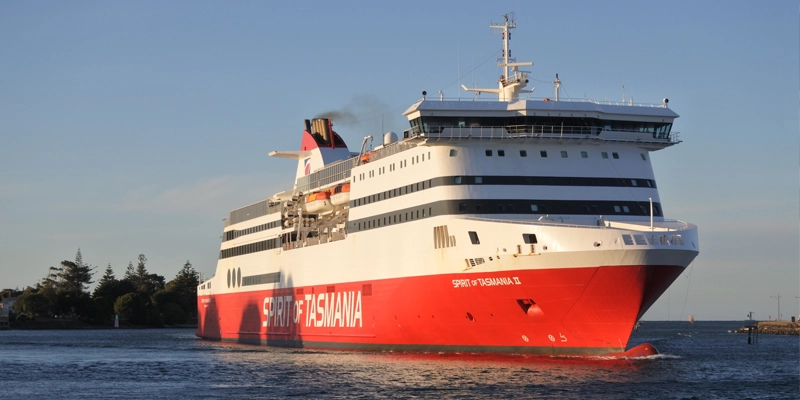
Benefits of living in Tasmania
Natural beauty and attractions
One of the standout reasons many are drawn to Tasmania is its unparalleled natural beauty. The island state boasts:
- National parks: Over 40% of Tasmania is preserved in national parks and world heritage sites. Whether it's the ancient rainforests of the Tarkine, the alpine landscapes of Cradle Mountain, or the pristine beaches of Freycinet National Park, there's something for every nature lover here.
- Rich wilderness: Discover the untouched Southwest National Park or venture to the Walls of Jerusalem and experience wilderness like nowhere else.
- Breathtaking beaches: From the renowned Wineglass Bay to the quiet shores of Boat Harbour Beach, Tasmanian beaches are diverse and stunning.
- Rugged Coastlines: The dramatic sea cliffs of the Tasman Peninsula and the famed Three Capes Track provide views and experiences that rival any coastline worldwide.
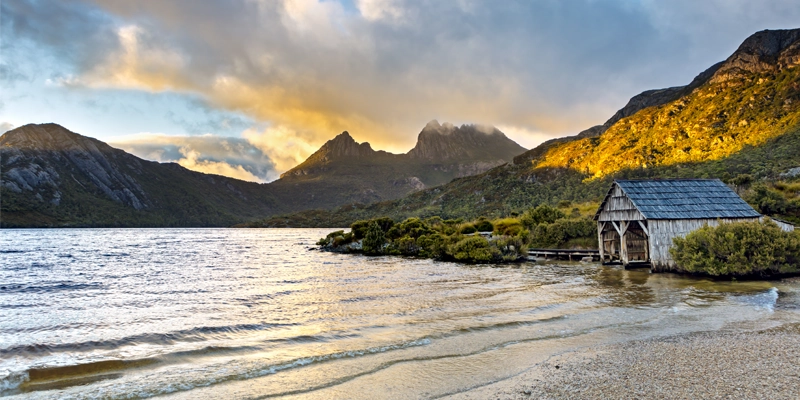
Dove Lake Cradle Mountain, Tasmania
Smaller communities & the perks of less crowded spaces
- Tighter-knit communities: In smaller towns and regions of Tasmania, there's a real sense of community and small town feel. This is where neighbours know each other by name, and there's always someone ready to lend a hand.
- Less traffic: With a smaller population, say goodbye to the gridlocked traffic of major cities. In Tasmania, your daily commute can often be accompanied by scenic views instead of brake lights.
- Space to breathe: With fewer people per square kilometre than most places in Australia, there's ample room for everyone. It's perfect for those looking for space to grow a garden, raise animals, or simply enjoy a more significant piece of the land.
- Safer environments: Lower population density often translates to fewer crimes and safer neighbourhoods, making it an appealing place for families and retirees.
Unique experiences exclusive to Tasmania
- Aurora Australis: While the Northern Lights get worldwide acclaim, Tasmania's southern skies sometimes dance with the colours of the Aurora Australis, a spectacle few places in the world can offer and especially in the southern hemisphere.
- Tasmanian devils: These unique creatures are native only to Tasmania. Seeing them in their natural habitat is a treat reserved for those on the island.
- Historic sites: From the haunting beauty of Port Arthur to the preserved colonial architecture of Battery Point, Tasmania holds a unique window into Australia's past.
- Gourmet experiences: The island boasts a rich culinary heritage with specialties like the freshest seafood, freshly shucked oysters, boutique cheeses, and fine wines that are distinct to the region and are worth exploring.
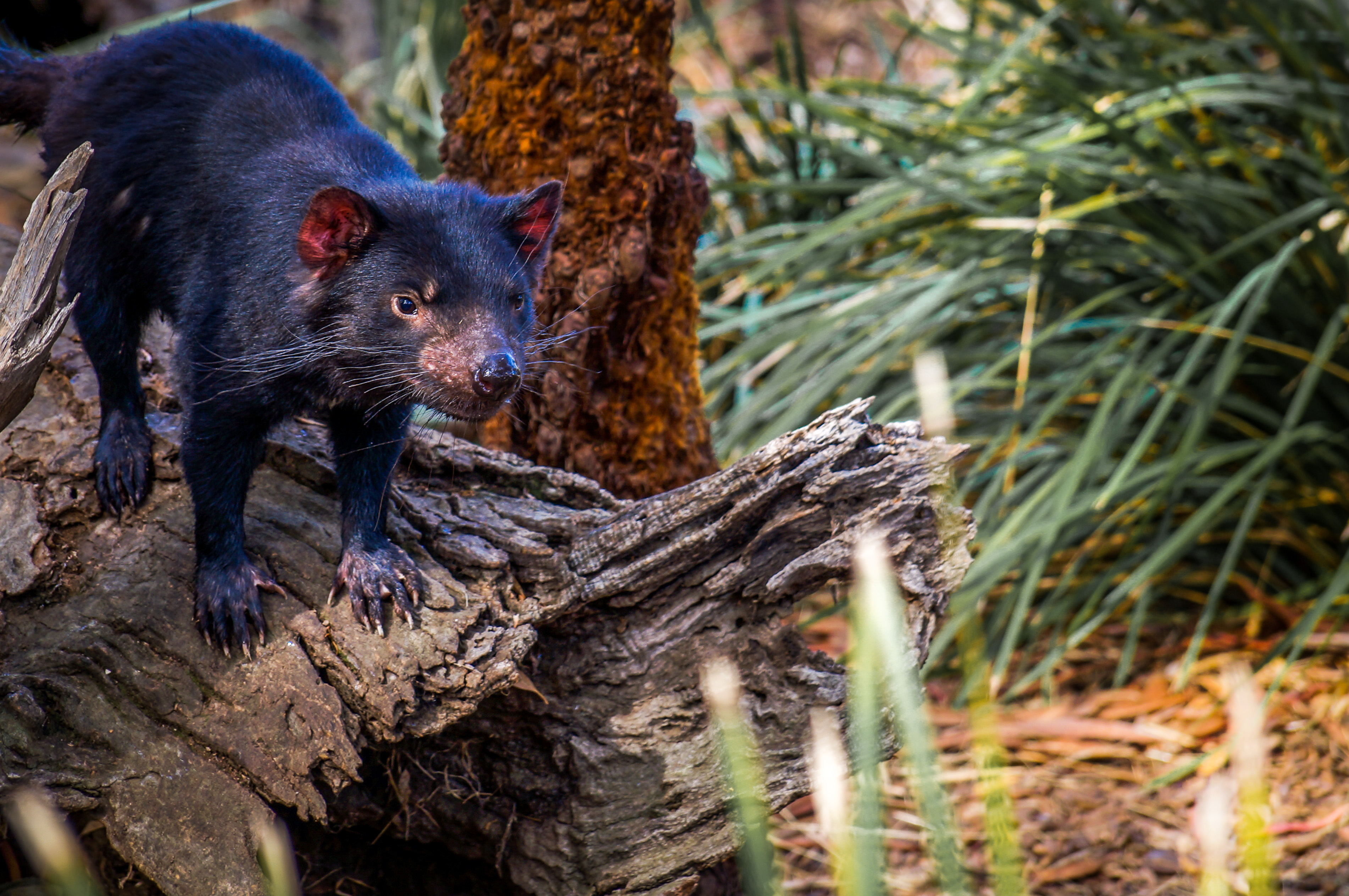
Tasmanian Devil in the wild
Tips for a smooth relocation to Tasmania
Engaging with local moving companies or services:
- Local expertise: Tasmania has its own specific nuances when it comes to relocation, and local Hobart moving companies are best suited to navigate these. They'll be familiar with ferry schedules, best routes, and potential challenges unique to the island.
- Cost-effective solutions: Local removalists in Tasmania might offer more competitive rates as they understand the logistics within the state. They're also more likely to have relationships with storage facilities, packing suppliers, and other necessary services.
- Insider tips: A local mover can provide insights on neighbourhoods, local customs, or even recommend reliable services like plumbers, electricians, or other essentials for settling in.
Considering the timing of the move:
- Weather-wise: Tasmania's climate can be unpredictable. It's wise to plan your move during warmer months, avoiding the chill of winter or the rainy season, to ensure a smoother transition of your belongings.
- School transition: If you have children, consider moving during school holidays. This allows them to finish a term at their old school and start fresh at the beginning of a new term in Tasmania, making the academic transition smoother.
- Peak moving seasons: Like all places, there are peak times when everyone seems to be relocating. Avoiding these times can mean better service and sometimes even lower costs.
If you are ready to make the move to Tasmania, download a copy of the moving checklist and start planning.
Final thoughts
After exploring the facets of Tasmania, from its mesmerising landscapes to the warmth of its communities, it's evident that this island offers a life that's both unique and enriching. While every move comes with its challenges, whether it's adjusting to the pace of life or navigating housing costs, the overarching sentiment remains consistent: Tasmania is a treasure waiting to be discovered.
To those contemplating the move: remember, relocating is more than just changing your address. It's about embracing new experiences, diving deep into unfamiliar terrains, and growing both personally and professionally. Tasmania, with its blend of natural beauty, tight-knit communities, and unique opportunities, promises an adventure like no other.
Life on the 'Apple Isle' might not mirror the bustling streets of Sydney or the vast expanses of the Outback, but it has its own rhythm, its own charm, and its own set of wonders. It's a place where every sunset over the Derwent can take your breath away, and every hike can lead to a hidden waterfall.
In essence, moving to Tasmania is an invitation to a journey. A journey filled with discovery, community, and endless horizons. While the decision to relocate should always be a well-thought-out one, rest assured that if Tasmania is your destination, a joyous and adventurous chapter awaits. Embrace it, cherish it, and let the island's magic work its wonders on you.
Helpful Tasmanian resources
Getting around Tasmania and finding what you need is a breeze when you have the right info at your fingertips! Check out these awesome resources we've put together just for you. They'll make living and travelling in Tasmania a piece of cake! 🍰
-
Tas Water: Tas Water is your go-to portal for all water and sewerage services in Tasmania. Whether you're looking for information on water quality, service disruptions, or starting a new connection, this platform has you covered.
-
Tas Gas: Delve into everything related to natural gas in Tasmania. From connections and disconnections to understanding your gas bill, Tas Gas offers comprehensive insights.
-
Metro Tasmania: Metro Tasmania provides bus schedules, route maps, and essential travel updates for residents and visitors alike.
-
Tassielink Transit: Expanding your travel horizons beyond the urban, Tassielink Transit connects you to regional and remote areas of Tasmania with reliable bus services.
-
Energy Made Easy: Making sense of your energy options just got simpler. This platform aids in comparing energy offers, understanding bills, and gaining insights into your energy usage.
Disclaimer
All values, prices, and related financial information provided on this platform or in our communications are for informational purposes only. While we strive to maintain accurate and up-to-date information, errors or discrepancies may occur. Furthermore, values and prices can fluctuate based on various factors, including market dynamics, time, geographic region, and external influences.
Ready to Move? Find Your Perfect Mover!
Don't let moving stress you out. Compare quotes from our network of reliable movers, read genuine reviews, and book with ease. Save time, save money, and start your move with confidence today.
- Quickly compare movers
- Read verified reviews
- Book online with confidence
